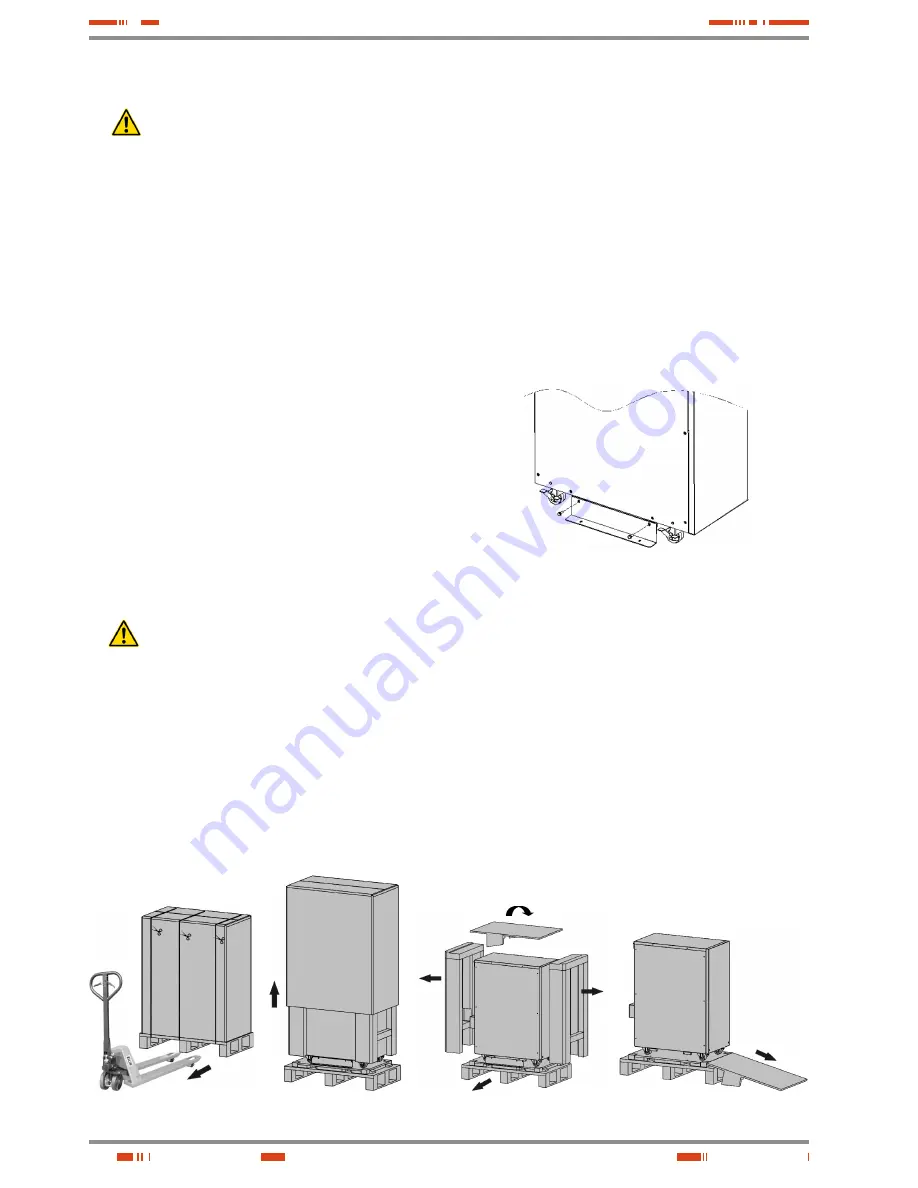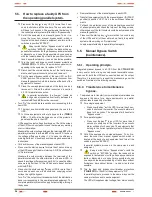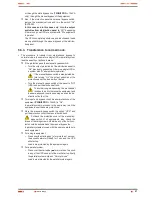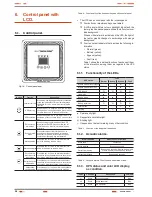
16
•
In case of observing damages, make all pertinent claims to
the transport agency or in their lack to our company.
Never start up an equipment when external damages
can be observed.
•
Also check that the data in the nameplate sticked in the pack-
aging and in the equipment, correspond to the ones stated
in the order, so it is required to unpack it (see section 4.2.3).
Otherwise, make a nonconformity as soon as possible, by
quoting the serial number of the equipment and references
in the delivery note.
•
Check the contents of the packaging:
The own equipment.
User's manual in computerised form (CD).
1 communication cable.
1 cable for connecting in parallel other equipments.
1 female connector to make the external EPO connec-
tion, with a cable bridge to close the electrical.
A metallic cover for the parallel connections. This cover
replaces to the one that device has as standard, which
is completely flat.
•
Once the reception is finished, it is advisable to pack the UPS
again till its commissioning in order to protect it against me-
chanical shocks, dust, dirt, etc...
4.2.2. Storage.
•
Storage of the equipment will be done in a dry place, safe-
guard from rain, protected from dust, water jets or chemical
agents, never outdoors. It is advisable to keep the equipment
and the battery pack/s, into their original packages, which
have been designed to assure the maximum protection
during the transport and storage.
•
In general and other than in special cases, the UPS
has sealed lead-calcium batteries and should not be
stored for more than 12 months (see the date of the last
charge of the batteries, noted on the label adhered to the
device packaging or on the battery unit).
•
After this time, connect the equipment to mains and together
with battery unit, if any, start it up according to the instructions
described in this manual and charge them for 2 hours from
floating level.
In parallel systems, it is not needed to make the connection
among the equipments to charge the batteries. It can be
treated as separate units to charge them.
Fig. 4.
Fig. 5.
Fig. 6.
Fig. 7.
•
Finally, shutdown the equipment, disconnect it and fit the UPS
and batteries in their original packaging, noting the new bat-
tery charge date on each respective label.
•
Do not store the devices where the ambient temperature
exceeds above 50ºC or below –15ºC, otherwise it may de-
grade the electrical characteristics of the batteries.
4.2.3. Unpacking.
•
The packaging of the equipment consists of a wooden
pallet, a cardboard or wooden packaging depending on
the case, expanded polystyrene corner pieces (EPS), poly-
ethylene foam (EPE), polyethylene sleeve and band, all of
them are recyclable materials; therefore they should be
disposed according to current regulations. We recommend
that the packaging should be kept in case its use is neces-
sary in the future.
Fig. 8.
•
Equipments with single phase input (
TWIN PRO
) or three
phase input (
TWIN/3 PRO
up to 10 kVA).
To unpack the equipment, just follow the sequence from
figure 4 to 6 (cut the bands on the cardboard packing and
take it out through the top as it were a cover or remove it
with the necessary tools if the packing is made of wood;
remove the corner pieces and the plastic sleeve. The
UPS will be naked over the pallet.
With the help of one or two people in each side of the
UPS, download it from the wooden pallet.
•
Equipments with three phase input (
TWIN/3 PRO
> 10 kVA).
To unpack the equipment, just follow the sequence from
figure 4 to 6 (cut the bands on the cardboard packing and
take it out through the top as it were a cover or remove it
with the necessary tools if the packing is made of wood;
remove the corner pieces and the plastic sleeve. The
UPS will be naked over the pallet.
USER MANUAL
Summary of Contents for SLC TWIN PRO Series
Page 2: ......
Page 43: ...43 SALICRU...
















































